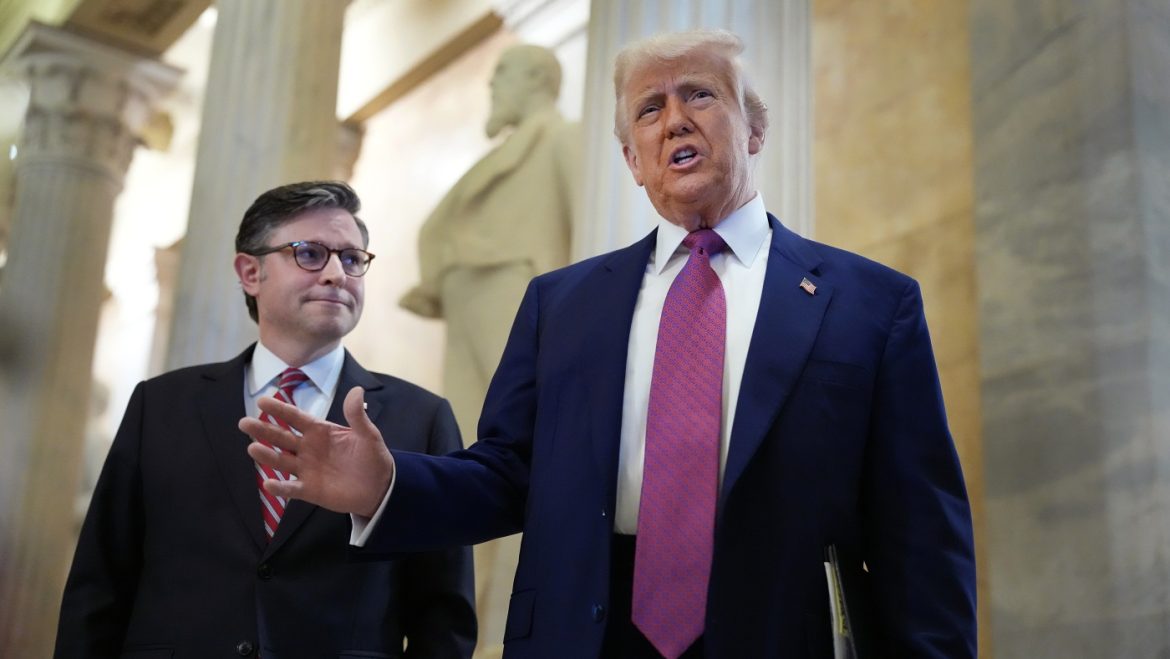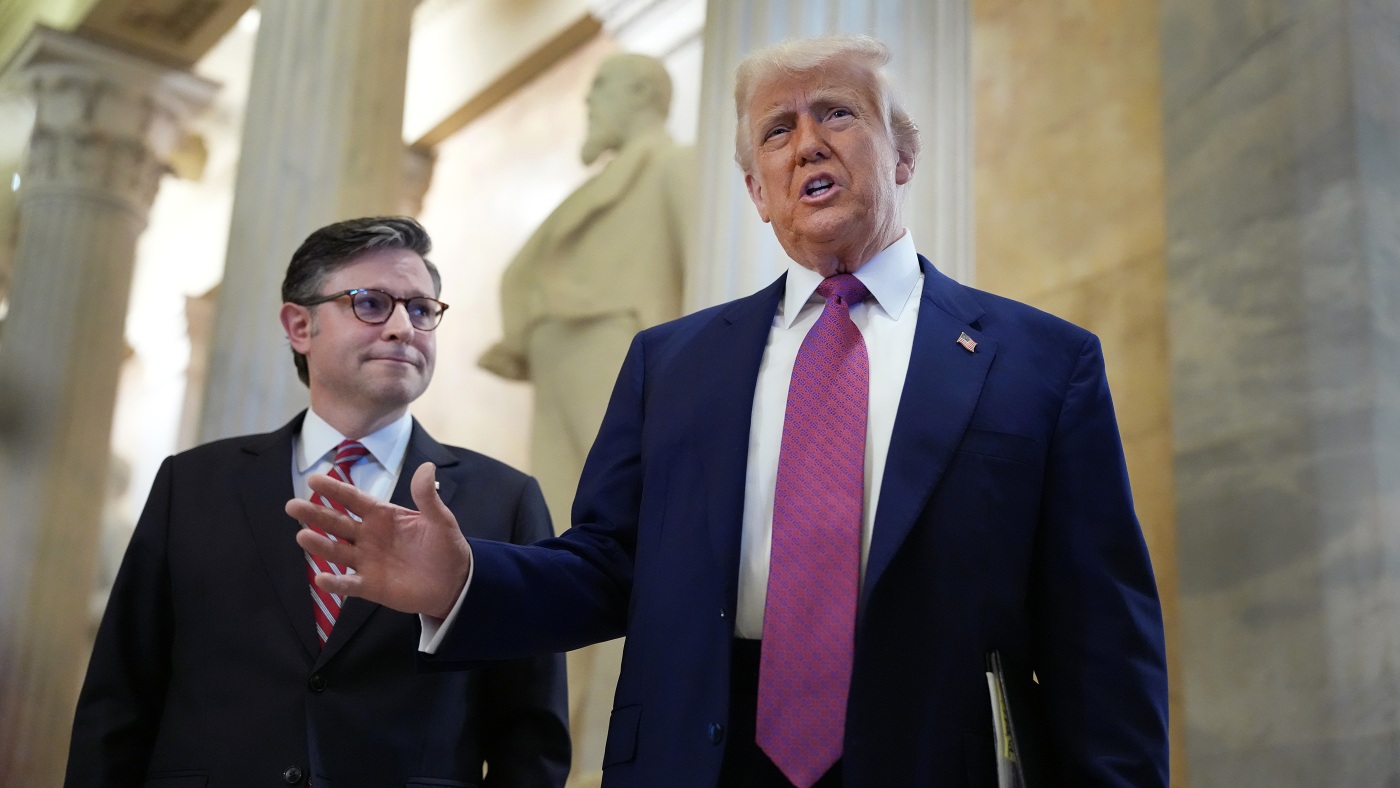The GOP Megabill: Navigating the Rocky Road of Trump’s Ambitious Legislative Agenda
The latest GOP “megabill” — a sprawling legislative package exceeding 1,100 pages — aims to enact major components of former President Donald Trump’s agenda through sweeping tax cuts, Medicaid reforms, and enhanced immigration enforcement. However, the bill’s expansive scope has ignited fierce intraparty divisions, strategic maneuvering, and high-stakes negotiations among House Republicans, complicating its path to passage.
Unpacking the Contents: What This “Big, Beautiful” Bill Entails
At its core, the megabill is a comprehensive policy package designed to fulfill long-trumpeted conservative goals. Key features include:
– Substantial Tax Cuts: The bill proposes sweeping reductions that benefit individuals and corporations, including provisions related to MAGA savings accounts and the controversial state and local tax (SALT) deduction caps. These tax breaks aim to stimulate economic growth while rewarding GOP priorities.
– Medicaid Reform: A spotlight of contention, the legislation seeks to impose stricter work requirements on Medicaid recipients, accelerate timelines for these measures beyond 2029, and deny benefits to undocumented immigrants. It also implements spending cuts to healthcare, nutrition (e.g., SNAP food assistance), education, and clean energy programs, intending to offset increased defense and immigration enforcement funding.
– Immigration Enforcement Enhancements: The bill increases resources for border security and immigration policing, aligning with the Trump administration’s hardline stance on illegal immigration.
– Spending Shifts: Besides defense, augmented investments target immigration agencies, while social safety nets face reduction or restructuring to finance these priorities.
– Procedural Complexity: Given its 1,116-page length, the bill packages diverse policy elements together, reflecting a “one big, beautiful bill” strategy to consolidate goals but also creating legislative complexity and surprise provisions.
Intricacies of GOP Dynamics: Conservative Holdouts and Leadership Challenges
Despite controlled GOP majorities, passage is far from assured. Multiple fronts reveal fractures within the Republican ranks:
– Conservative Hardliners Resist: House Freedom Caucus members and other conservative Republicans have stalled or even blocked the bill at key procedural steps, particularly citing dissatisfaction with Medicaid reform’s speed and scope. Some argue the bill does not cut enough spending and fails to aggressively curtail government programs.
– Leadership Juggling Acts: Speaker Mike Johnson and party leaders have been scrambling — including late-night negotiating sessions and direct White House involvement — to bridge divides between moderate and hardline factions. President Trump himself has participated in impromptu meetings with holdouts, exhorting them to support the bill.
– Committee Roadblocks: The House Budget Committee has seen near-disastrous votes, where conservative opposition has delayed advancement. At times, the bill has failed to move forward, forcing revisions and amendments to placate dissenters.
– Whip Counts and Vote Margins: The razor-thin margins emphasize the fragility of GOP cohesion. Even a single absent Democrat or Republican shifts the threshold, underscoring uncertainty in securing enough votes for final passage.
– Last-Minute Surprises: Some Republicans report encountering unfamiliar provisions in the bill’s laundry list, especially concerning Medicaid, intensifying mistrust and pushing for further clarifications.
The Impact of Democratic Opposition and Bipartisan Dynamics
Democrats have pledged unanimous opposition to the megabill, framing it as a regressive agenda that cuts social programs and prioritizes tax breaks for the wealthy. This entrenched resistance means the GOP cannot rely on bipartisan support to advance legislation, heightening the importance of internal unity.
Strategic Timing: Memorial Day Deadline and Procedural Maneuvers
With a self-imposed Memorial Day deadline looming, GOP leadership is expediting procedural steps, including fast-tracking bills through committees and scheduling votes despite ongoing discord. Late-night voting sessions demonstrate urgency but also reveal the stress of navigating a divided caucus.
Political Implications and Future Outlook
The stakes transcend the bill’s individual policies. For Trump, this megabill represents a vital legislative achievement to cement his legacy and address campaign promises. Its success or failure will impact:
– GOP Brand Cohesion: The ability or inability to pass the bill highlights internal power struggles and ideological cleavages within the Republican Party.
– Legislative Precedents: The bundling of diverse policies into an omnibus bill signals ongoing debates about legislative strategy and governance.
– Electoral Prospects: How this legislation plays out could influence voter perceptions ahead of upcoming elections, shaping narratives about responsiveness and effectiveness.
A bill of this magnitude and ambition rarely unfolds smoothly. The GOP megabill’s fate will depend on continued negotiation finesse, compromise on Medicaid and spending measures, and the capacity to unify disparate factions — all while navigating entrenched opposition and a fragmented political landscape.
Closing Thoughts: A Political Balancing Act in Uncharted Territory
The GOP megabill epitomizes the challenge of translating grand policy visions into legislative reality amid a fractious and high-stakes environment. As Republicans grapple with reconciling divergent interests — from ultras to moderates — their maneuverings over this colossal bill not only shape immediate policy outcomes but also define the party’s identity and coherence moving forward.
The coming days promise drama and decisive moments. Whether the GOP can deliver on this “one big, beautiful bill” will test their strategic acumen and political will, offering a telling glimpse into the future of conservative governance and Trump’s enduring influence on American politics.


